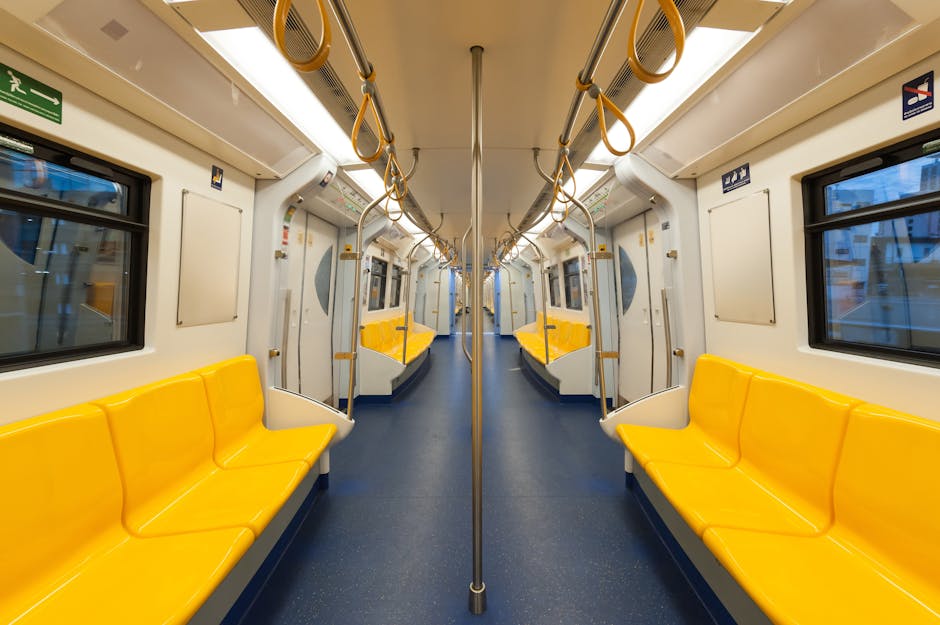How To Plan Daily Commutes When You Don't Know The Mileage
Are you constantly left guessing the distance of your daily commute? Do you find yourself longing for a foolproof method to plan your journeys with precision and efficiency? Look no further, as this article presents a comprehensive guide on how to plan your daily commutes when you don't know the mileage.
With a plethora of online mapping tools at our disposal, we can easily navigate through unknown territories and calculate distances accurately. Furthermore, public transportation resources serve as an invaluable asset in ensuring reliable and timely travel. By estimating travel time based on distance, we can better manage our schedules and avoid unnecessary delays.
Additionally, tracking and analysing previous commutes allows us to make informed decisions about route selection and potential obstacles along the way. Lastly, seeking local advice and recommendations provides valuable insights from those who are familiar with the area.
By following these techniques, you can regain control over your daily commutes without ever fretting over uncertain mileages again.
Key Takeaways
- Online mapping tools provide accurate information on routes, traffic conditions, and travel times for effective commute planning.
- Utilising public transportation resources allows for fare comparison, transfer options, and estimation of travel time based on distance optimisation.
- Tracking and analysing previous commutes helps identify recurring delays and plan alternative routes.
- Seeking local advice and recommendations, either through online forums or conversations with co-workers, neighbours, or friends, provides valuable insights on traffic patterns and alternative routes for improved travel time and convenience.
Utilising Online Mapping Tools

Online mapping tools provide a convenient and efficient method for planning daily commutes. They offer accurate and up-to-date information on routes, traffic conditions, and estimated travel times. These tools allow individuals to find alternative routes when faced with unexpected road closures or heavy congestion, helping them avoid delays and arrive at their destination in a timely manner.
By inputting the starting point and desired destination into the online mapping tool, users can quickly generate multiple route options that take into account current traffic patterns.
In addition to providing route suggestions, online mapping tools also offer features that calculate fuel costs based on the distance of the commute. This information can be particularly useful for individuals who are conscious of their budget or looking to minimise expenses. By knowing how much fuel will be consumed during their commute, individuals can better plan their finances and make informed decisions about whether it is more cost-effective to drive or explore other transportation options.
Overall, utilising online mapping tools allows commuters to have greater control over their daily journeys by providing them with detailed information about various aspects of their commute. Whether it is finding alternative routes to avoid traffic congestion or calculating fuel costs to make informed decisions about transportation choices, these tools empower individuals to plan their commutes in a way that suits their needs and preferences.
In the subsequent section about using public transportation resources, individuals can further explore additional options available to them for planning efficient daily commutes without relying solely on personal vehicles.
Using Public Transportation Resources

Public transportation resources provide a comprehensive array of tools and information to facilitate effective navigation within urban environments. These resources are particularly useful for individuals who need to plan their daily commutes but do not know the mileage of their trips. One valuable tool offered by public transportation resources is the ability to compare fares across different modes of transportation. This allows commuters to make informed decisions about the most cost-effective options for their journeys.
In addition to fare comparison, public transportation resources also offer information on transfer options. Many urban areas have multiple transit systems, such as buses, trains, and subways, that can be used in combination to reach a destination. Public transportation resources provide detailed maps and schedules that outline these transfer points, making it easier for commuters to plan their routes.
To illustrate the benefits of using public transportation resources for planning daily commutes, consider the following table:
| Mode of Transportation | Fare (One-way) |
|---|---|
| Bus | $2 |
| Train | $3 |
| Subway | $2.50 |
By comparing the fares listed in this table, commuters can determine which mode of transportation offers the best value for their needs.
Public transportation resources offer valuable tools and information that enable individuals to plan their daily commutes without knowing the exact mileage of their trips. By providing fare comparison and transfer options, these resources empower commuters with control over their travel decisions. The next section will discuss how estimating travel time based on distance can further enhance commute planning efficiency.
Estimating Travel Time Based on Distance

Estimating travel time based on distance can provide commuters with a valuable tool for optimising their daily journeys. By knowing the approximate distance of their commute, individuals can better plan and allocate their time to ensure they arrive at their destination punctually. This method is particularly useful for those who rely on public transportation as it allows them to determine when they need to leave their homes in order to catch their desired bus or train.
When estimating travel time based on distance, it is important to consider various factors that may affect the actual duration of the commute. Traffic patterns play a crucial role in determining how long it will take to reach a destination. Rush hour traffic, for example, can significantly increase travel times, while travelling during non-peak hours may result in a quicker journey. Additionally, weather conditions should also be taken into account as rain or snow can lead to slower traffic and longer travel times.
To accurately estimate travel time based on distance, commuters should familiarise themselves with typical traffic patterns and weather conditions along their route. They can consult online resources or mobile applications that provide real-time updates on traffic congestion and weather forecasts. By staying informed about these factors, commuters can make more informed decisions about when to leave and which routes to take.
Tracking and analysing previous commutes can further enhance the accuracy of estimating travel time based on distance. By keeping records of past journeys, individuals can identify trends or patterns that may affect future commutes. This information allows them to adjust their departure times accordingly and choose alternative routes if necessary.
Estimating travel time based on distance is an essential tool for optimising daily commutes. Understanding traffic patterns and considering weather conditions are key elements in accurately predicting how long a journey will take. Tracking previous commutes provides additional insights that aid in planning future trips effectively without relying solely on guesswork or chance encounters with unexpected delays.
Additionally, incorporating real-time data from traffic and weather apps can further enhance the accuracy of journey predictions by accounting for any unforeseen incidents or adverse weather conditions that may impact travel times.
Tracking and Analysing Previous Commutes

Tracking and analysing previous commutes allows individuals to gain valuable insights into factors that may affect future travel times, enabling them to make informed decisions and optimise their journeys. By analysing patterns in their previous commutes, individuals can identify recurring traffic congestion or other delays that may impact their daily travel. This analysis helps them anticipate potential obstacles and plan alternative routes accordingly.
Exploring alternative routes is an essential aspect of optimising daily commutes when the mileage is unknown. By examining data from previous commutes, individuals can identify different routes they have taken in the past and evaluate their effectiveness in terms of travel time and overall convenience. They can also explore new routes by using online mapping tools or seeking advice from fellow commuters who have experienced similar situations.
Incorporating a bullet list for clarity:
Analysing patterns: Examining data from previous commutes allows individuals to identify recurring factors that may affect travel times, such as rush hour traffic or construction zones.
Exploring alternative routes: By evaluating different routes taken in the past, individuals can determine which ones offer faster or more efficient travel options.
Utilising online mapping tools: These tools provide real-time traffic updates and suggest alternative routes based on current conditions.
Seeking advice from fellow commuters: Engaging with others who have faced similar commuting challenges can provide valuable insights and recommendations for navigating unknown distances.
By tracking and analysing previous commutes, individuals are better equipped to plan their daily journeys effectively. However, gaining local advice and recommendations is another crucial step in ensuring a smooth commute without knowledge of mileage.
Seeking Local Advice and Recommendations

Seeking local advice and recommendations from experienced commuters can provide valuable insights for navigating unfamiliar routes and optimising travel times. When planning daily commutes without knowing the mileage, it is essential to understand the local traffic patterns and consider alternative routes that could potentially save time.
Local commuters who have been travelling the same route for an extended period often possess a wealth of knowledge about the best times to travel, areas prone to congestion, and shortcuts that can be taken.
One way to seek local advice is by joining online forums or groups dedicated to commuting in specific areas. These platforms allow individuals to connect with others who have similar travel routes and experiences. By participating in these communities, one can gain access to firsthand information on local traffic patterns and receive recommendations on which roads or highways are most efficient at different times of the day.
In addition to online communities, engaging in conversations with co-workers, neighbours, or friends who live in the area can also yield valuable insights. These individuals may have personal experience with various routes and may be able to offer suggestions based on their own commutes.
When seeking advice from locals, it is important to ask specific questions about alternative routes that could help avoid heavy traffic areas during peak hours. Understanding which roads are less congested or if there are any construction zones along the way can significantly impact commute times.
By incorporating local knowledge into daily commute planning, individuals can make informed decisions about when and how they travel. Taking advantage of locals' expertise not only helps optimise travel times but also provides a sense of control over one's daily journey through familiarising oneself with alternative routes that may be more efficient than traditional ones.
Frequently Asked Questions
How do I factor in traffic conditions when planning my daily commute?
When planning a daily commute, it is important to factor in traffic conditions. This can be done by checking the weather forecast and considering how it might impact road conditions.
Additionally, using public transportation efficiently can help mitigate traffic-related issues. By utilising apps or websites that provide real-time traffic updates, individuals can make informed decisions about their routes and departure times.
Public transportation options such as buses or trains can also be explored as alternatives to driving in heavy traffic situations.
What are some tips for avoiding rush hour traffic when planning my commute?
One effective way to avoid rush hour traffic when planning your commute is by incorporating the use of public transportation.
By utilising buses, trains, or subways, you can bypass congested roadways and potentially reduce your travel time.
Additionally, relying on public transportation can also help alleviate the stress of navigating through heavy traffic and searching for parking spaces.
However, it is important to consider potential delays or service disruptions that may occur while using this mode of transportation.
Are there any alternative routes or backroads that I should consider when planning my daily commute?
Alternative routes can be a useful strategy for planning daily commutes. When considering alternative routes, it is important to prioritise efficiency and time-saving options. Backroads may offer less traffic congestion and provide a scenic route, but they may also involve longer distances or slower speeds. Utilising GPS navigation systems or online maps can assist in identifying potential alternative routes. However, it is advisable to test these routes beforehand to ensure they meet the desired criteria of minimising travel time and avoiding rush hour traffic.
How can I estimate the cost of my daily commute, including fuel expenses and tolls?
Estimating commute time and calculating toll costs are crucial factors when planning daily commutes. According to a recent study, the average American spends approximately 54 minutes commuting each day, translating to about 225 hours per year.
To estimate fuel expenses accurately, consider the distance covered and your vehicle's fuel efficiency. Additionally, researching toll rates along potential routes will help calculate toll costs.
This information allows commuters to make informed decisions and efficiently manage their transportation expenses.
Are there any specific safety considerations or tips to keep in mind when planning a daily commute in an unfamiliar area?
Safety precautions and tips are essential when planning a daily commute in an unfamiliar area.
Prioritise using reliable navigation apps to ensure accurate directions and avoid getting lost.
Familiarise yourself with local traffic laws and regulations, including speed limits and parking restrictions.
Research the safety reputation of the areas you will be travelling through, especially during specific times of day.
Maintain situational awareness, be cautious at intersections, and follow defensive driving techniques to minimise potential risks on the road.
Contact us to discuss our services now!

